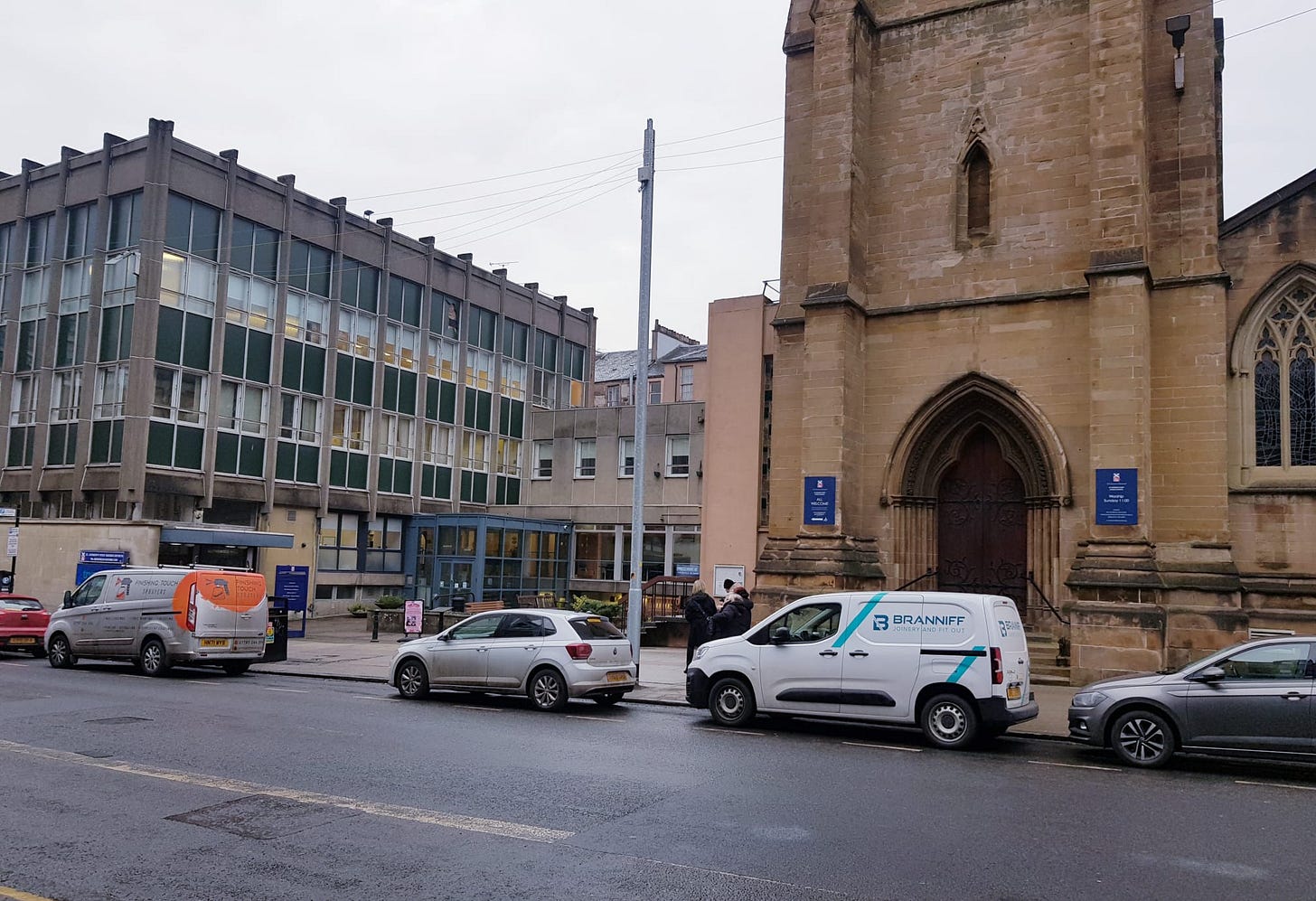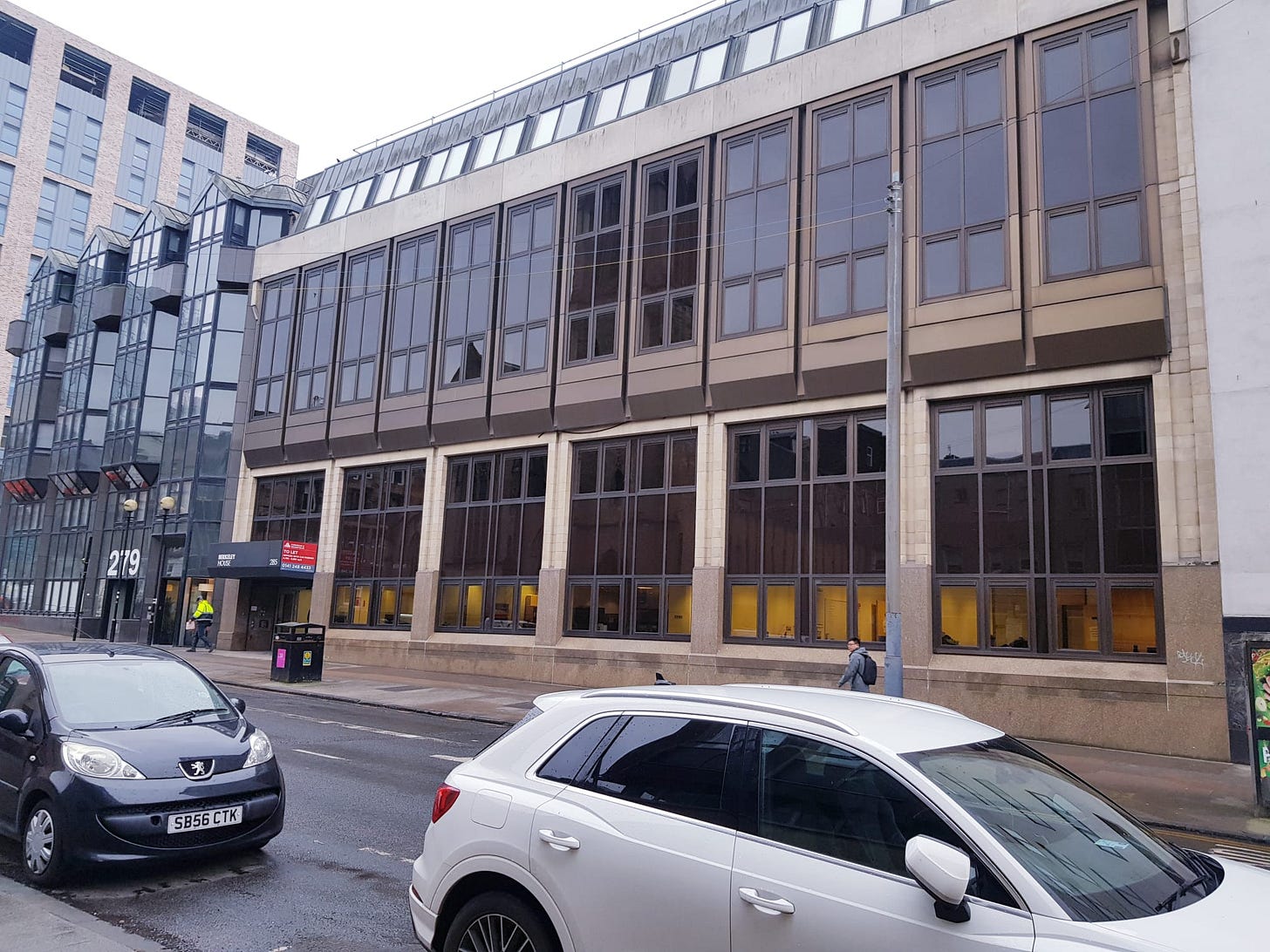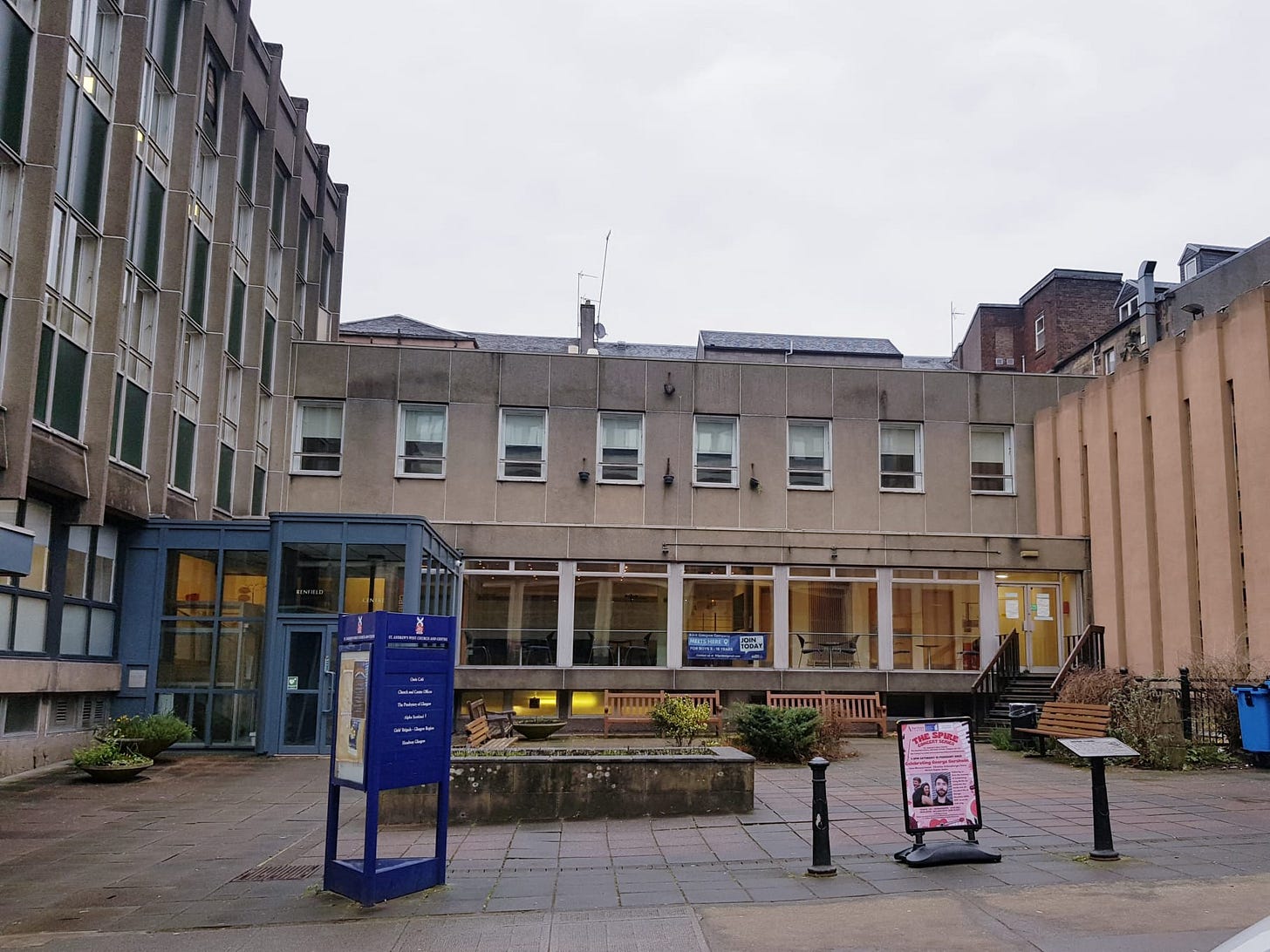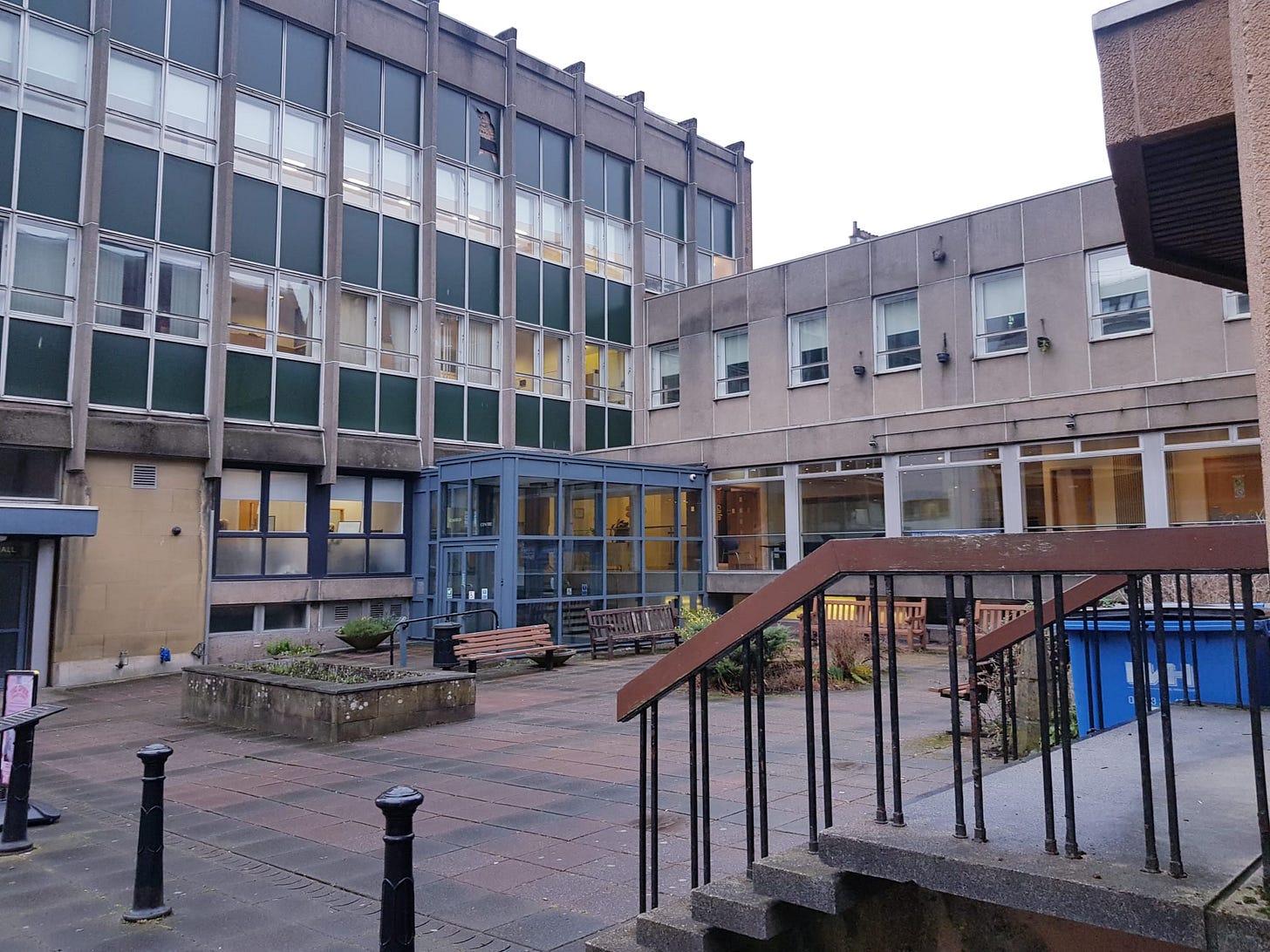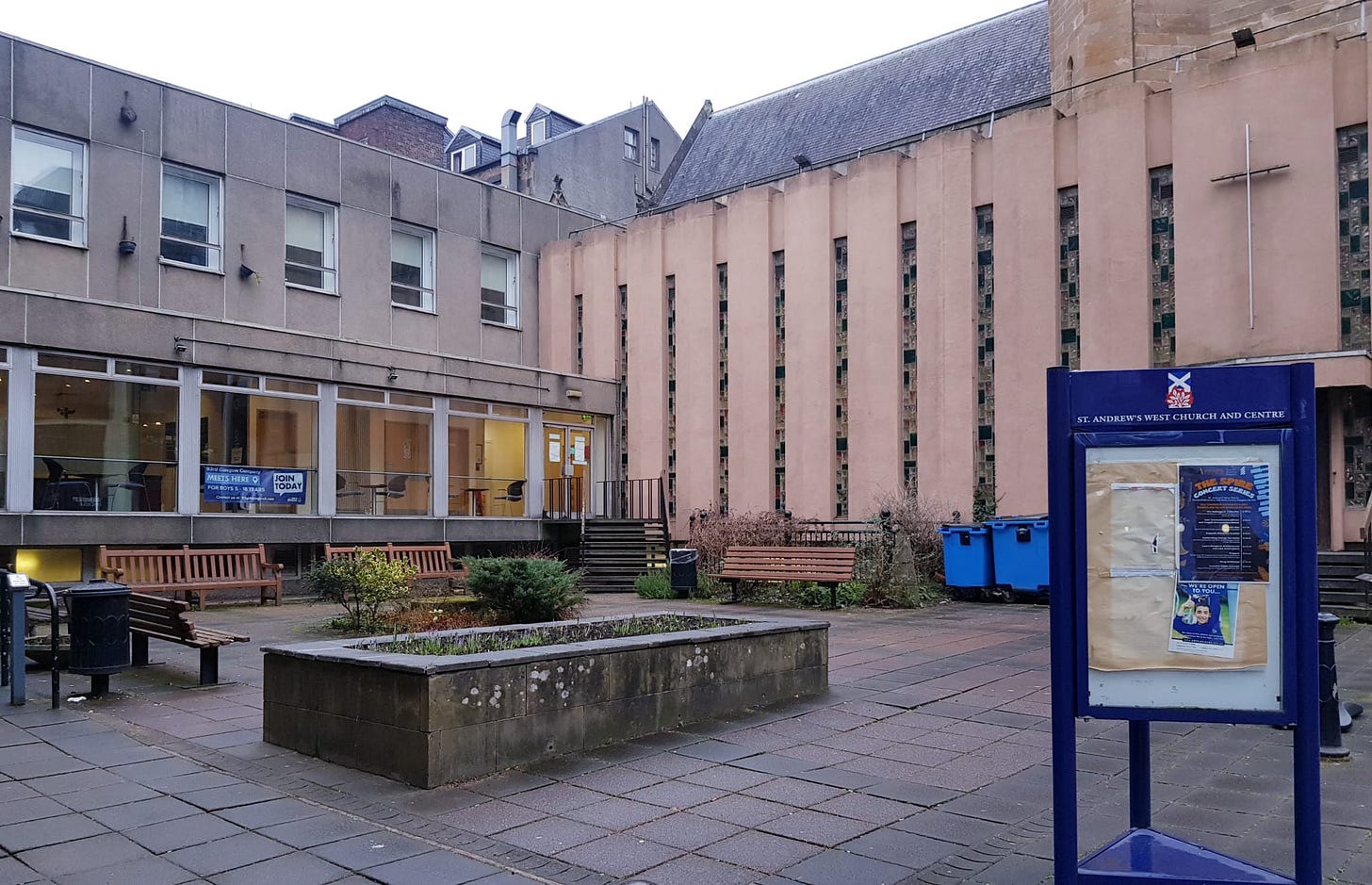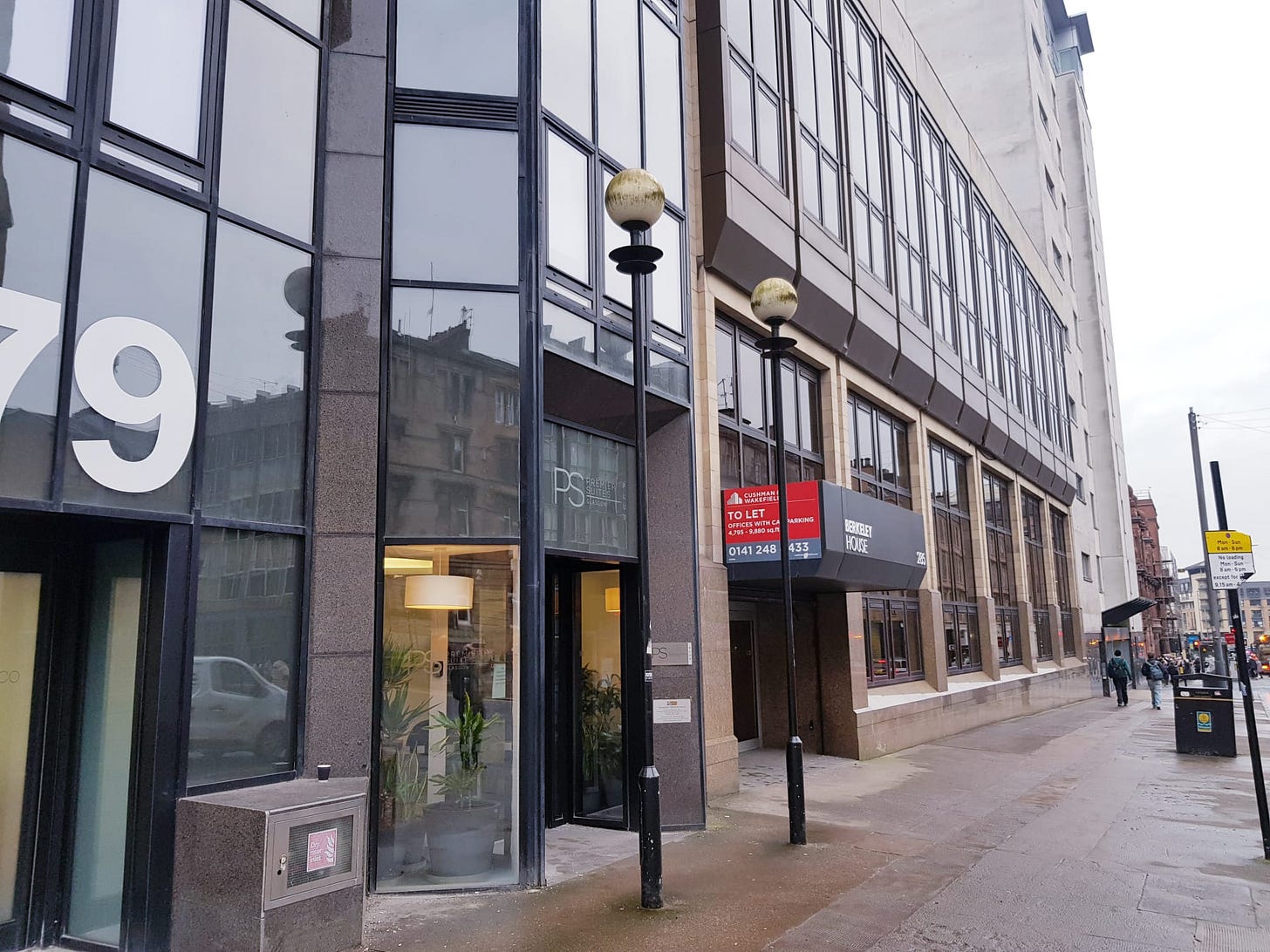EXCLUSIVE: Charity Warns Glasgow City Centre Student Tower Could Threaten Vital Brain Injury Support
Developers Pledge Full Consultation After Concerns Raised Over Bath Street Demolition
Today’s story is free, but quality journalism costs. The Splash relies on your support to keep telling the stories that matter to Glasgow.
For a limited time, get 33% off our annual subscription—less than the price of a coffee. Your subscription helps us stay independent and continue in-depth, investigative reporting.
If you believe in real, community-driven journalism, join us today. Help keep The Splash alive and hold power to account.
To our readers who have already signed up—thank you. Your support keeps us going.
EXCLUSIVE By Gary Fanning
A charity supporting thousands of people with brain injuries has expressed serious concerns over plans to build a 17-storey student accommodation complex in Glasgow’s City Centre conservation area.
Headway, based in the Renfrew Centre, fears the proposed development at 285 Bath Street could significantly impact its operations and the people it supports.
The charity's operations manager, Bob Bogle, voiced his concerns at a meeting of the Blythswood and Broomielaw Community Council on Tuesday evening.
Applicants McLaren Property plans to demolish a disused 1970s office building called Berkley House and replace it with 250-bed purpose-built student accommodation.
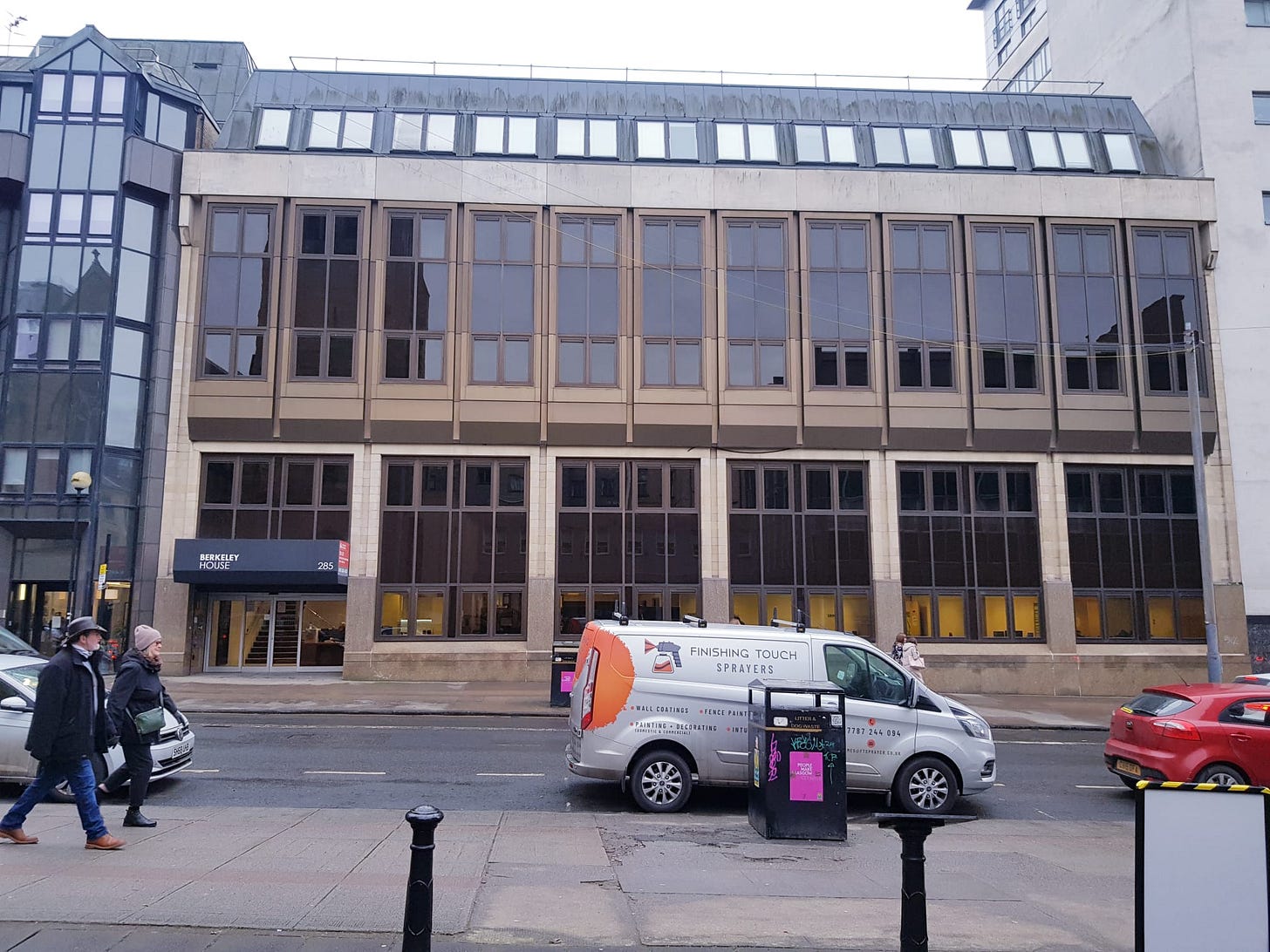
However, Mr Bogle criticised the consultation process, stating that Headway and other tenants in the building at the Renfrew Centre, based in Bath Street, were not included.
Headway Warns of Accessibility and Noise Issues
Mr Bogle highlighted the charity’s role in supporting individuals aged 18 and above who have suffered brain injuries, directly assisting 600 people and indirectly supporting 3,500 more.
“We are concerned that the consultation process was not inclusive,” he said.
“It appears that notices were limited to small print ads in newspapers and minor signage on lampposts, which does not meet equality standards.”
He also raised concerns about accessibility, stating that 90% of those they support come from the ten poorest wards in Glasgow.
“I have witnessed a degradation of access for our service users.
“Friends and family dropping people off, as well as taxis, are struggling due to the shortage of accessible parking.”
He explained that those using mobility scooters often find it difficult to park close enough to access the centre.
“A standard parking space is not enough for someone with a portable hoist to exit their vehicle safely.”
The charity fears that noise from demolition and construction could also severely impact service users.
“If you have a brain injury, your tolerance to noise is much lower,” Mr Bogle said.
“We have groups that meet regularly, including a social care group on Mondays for individuals aged 20 to 84, an art group on Tuesdays, a creative writing group on Wednesdays, and a women’s support group for survivors of gender-based violence. These sessions could be severely disrupted by construction work.”
And he added: “We deliver groups and deliver 121 service and an advocacy service. What this would do would close down our group.”
Headway plans to lodge a formal objection to the development by Friday. “I have a duty of care to these people,” Mr Bogle added. “They have suffered enough.”
However, two days after the community council meeting, a statement was issued to The Splash on behalf of Headway and their neighbouring tenants within Renfield Centre, Triple Tap Tech, a visually-impaired technology charity.
The joint statement marked a noticeable softening of Headway’s earlier concerns, though it remains unclear whether the charity’s original objections have been fully addressed.
It stated: “I can confirm that the owners of 285 Bath Street have this week made direct contact and promised proper and full consultation regarding the severe impact of the proposed demolition and construction plans for the site.
“Both charities greatly welcome this very recent engagement by the developers and look forward to a mutually beneficial solution for all of the very vulnerable individuals both of our charities support.”
Community Objections Over Scale and Impact
Beyond Headway’s concerns, wider objections have been raised about the scale of the development.
The proposal for a 17-storey tower has drawn criticism by members of the community council for being out of character with Bath Street’s conservation area status and overshadowing neighbouring properties, including a nearby church and residential buildings.
Ward Councillor Angus Millar has previously objected to the increasing concentration of student accommodation in the area.
He noted that the latest plans for 285 Bath Street are “taller and more dramatic” than earlier proposals and confirmed his intention to oppose the project.
“There is already a high concentration of student accommodation in this area,” he said.
“Planners are now requiring developers to prove that their student housing can be converted into standard rental apartments should market demand change.”
Concerns have also been raised about the loss of green space, reduced sunlight, and the broader impact on the area’s heritage.
“When does the council consider there to be too many student rooms?” one city-centre resident asked.
“These buildings are often not convertible into social housing or apartments, making them a long-term concern for the city’s development.”
Another key issue is the proximity of the new building to existing properties, with some bedroom windows potentially just two metres apart.
“I would be concerned about the longevity of any building designed solely for one purpose,” the resident added.
A planning consultant previously addressed these concerns, arguing that the design would not obstruct adjacent properties’ windows.
He added: “We are not pushing our building further south and not any more impact on the existing building.”
“The design ensures a separation of 14 metres between windows at the back and 16 metres elsewhere, which is the maximum feasible distance within the site constraints.
While an 18-metre separation is standard in suburban developments, city centre buildings typically have smaller gaps between them.
The Renfield Street Trust at 260 Bath Street, directly opposite 285 Bath Street, have also objected to the plans.
Ian Mowat, Company Secretary The Renfield Street Trust, said: “The proposed height of the building will overshadow our premises and our patio being almost due south of our building causing daylight reduction to church and adjoining premises and patio.
“Our patio, which is not publicly owned, but is available 24/7 for use by the public providing the only green open space in the whole of Bath Street.
“It is maintained by volunteers from the church through donations in kind of plants, bulbs, etc and has received several annual awards from The Incorporation of Gardeners of Glasgow.
“This proposed development would substantially reduce direct sunlight from shining into our patio. The proposed development will be of similar height to the church spire and will impact upon it. The church is a listed building that we maintain. If the proposed development height were to be lowered to the same height as the existing building at 285 Bath Street (Berkley House) we would welcome this.”
David Atherton, McLaren Property's divisional managing director, said:
“Throughout the planning process, we have actively engaged with local stakeholders and the wider community.
“This has included a comprehensive public consultation, distributing information leaflets to local addresses, maintaining a public website, inviting residents to information meetings and attending a meeting twice with Blythswood and Broomielaw Community Council.
“We have also been in direct contact with various local stakeholders, including Headway.
“We have assured Headway that, if the development goes ahead, we will take every feasible step to minimise disruption for their service users during construction.
"Our goal is to deliver a development that meets Glasgow’s urgent need for high-quality student accommodation while being sensitive to local needs.
Additionally, proposals include a ground-floor space, which we are offering as a base for a local community group, retail space or café."
“We will provide the contact details of the construction site manager to all members of the public and will address any concerns while construction is ongoing.
“The site manager’s details will normally be located on the development site hoarding near the office and we welcome any dialogue with the local community throughout the process.”
McLaren Property maintains that the development will bring economic benefits to the city.
According to the project's website, construction is expected to create 300 jobs, while the new accommodation will help address what developers describe as a student housing shortage in Glasgow.
Plans include a ground-floor commercial space that could be used as a base for a local community group, as a café, or retail unit.
The scheme could include gym, bike storage and a roof garden.
Leading property agents, CBRE have prepared a student demand assessment report to inform the site selection and viability.
The number of students in Glasgow has grown to its largest ever at 77,640. At present there are 20,080 PBSA beds in Glasgow.
CBRE conclude that there are 16,407 students in Glasgow that are unable to access PBSA, which dramatically increases to 30,127 if the calculations include students currently living in their “own residence”.
Including the development pipeline of consented PBSA, there is still an unmet demand of 13,621 bedspaces.
The University of Glasgow, Strathclyde, and Glasgow Caledonian have invested heavily in new and existing facilities and all have the strategic goal of attracting top candidates and strengthening international ties to have a global impact.
Mr Atherton said the project would ‘bring this Glasgow city centre site back to life’.
“We want to deliver best-in-class student homes to the city, which will help address the widely reported shortage of student accommodation and support both the universities and Glasgow to retain and develop young talent.”
While developers insist the project will revitalise the site and address student housing shortages, local residents and organisations continue to push back.
The deadline for submitting objections is today (Friday), with concerns being lodged through the Glasgow City Council planning portal.






